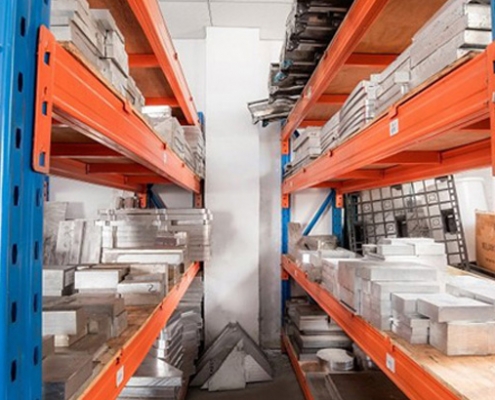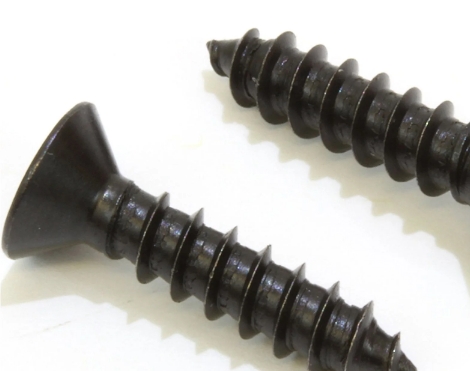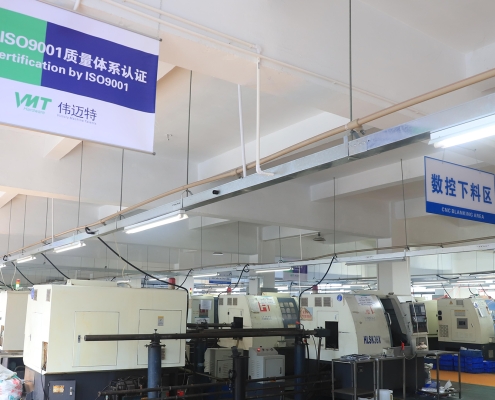Aluminum vs Stainless Steel: An Ultimate Guide to CNC Machining Materials
When choosing between aluminum and stainless steel, understanding their unique characteristics is crucial. Aluminum offers lightweight versatility, making it ideal for applications requiring mobility or ease of handling. Stainless steel, on the other hand, excels in strength and durability, often preferred for heavy-duty or high-stress environments.
Whether you prioritize weight, strength, or corrosion resistance, comparing aluminum vs stainless steel ensures you select the right material for your specific needs.
What is Aluminum?
Aluminum is a lightweight, silvery-white metal that is widely used in everyday life. In CNC machining, aluminum is highly favored because of its excellent machinability. It is easy to cut, shape, and form, making it ideal for creating precision components with tight tolerances. Additionally, its lightweight nature reduces wear on machining tools, enhancing efficiency in production. Aluminum CNC parts are often used in aerospace, electronics, and automotive industries.

What is Stainless Steel?
Stainless steel is a strong, shiny metal made by adding chromium to regular steel, which helps it resist rust and stains. Famous for its durability, sleek appearance, and ability to withstand heat and moisture, stainless steel is widely used in kitchen utensils, medical equipment, buildings, and even jewelr.
In CNC machining, stainless steel stands out for its strength and versatility, though it is more challenging to machine compared to aluminum due to its hardness. It requires specialized tools and techniques to achieve precise results. Despite this, stainless steel is ideal for parts that need high durability, wear resistance, or a polished finish. CNC-machined stainless steel components are commonly used in heavy machinery, medical devices, and high-stress environments.
Material Properties in Aluminum vs Stainless Steel
Aluminum and stainless steel are two common choices when it comes to selecting materials for construction, manufacturing, or design. Understanding their material properties is essential to choosing the right one for your specific application. Here’s an in-depth comparison of their strength, durability, and other key factors.
1. Strength and Durability
When comparing aluminum vs stainless steel, strength and durability emerge as critical factors. Stainless steel boasts exceptional tensile and compressive properties, making it ideal for applications requiring high load-bearing capacity. For instance, 316L stainless steel exhibits superior yield and ultimate stress values, outperforming aluminum alloys in heavy-duty environments.

Aluminum, while less robust, offers adequate strength for lightweight applications. Dissolvable aluminum alloys, often used in aerospace and automotive industries, demonstrate brittleness under compression but excel in scenarios where weight reduction is paramount. CNC machining processes frequently leverage aluminum’s malleability to create intricate designs without compromising structural integrity.
2. Weight and Density
Weight plays a pivotal role in material selection, especially in industries like transportation and construction. Aluminum is approximately one-third the weight of stainless steel, making it significantly lighter. For example, a 100mm³ cube of Aluminum 6061 weighs 270 grams, while the same volume of Stainless Steel 304 weighs 800 grams. This stark difference stems from their densities—aluminum averages 2.7 g/cm³, whereas stainless steel ranges around 8.0 g/cm³.
| Material | Density (g/cm³) | Weight Comparison |
|---|---|---|
| Aluminum (6061) | 2.7 | 1× (baseline) |
| Aluminum (7075) | 2.8 | 1.04× |
| Stainless Steel 304 | 8.0 | 2.96× |
| Stainless Steel 316 | 8.0 | 2.96× |
| Stainless Steel 17-4 PH | 7.8 | 2.89× |
Aluminum’s lightweight nature makes it a preferred choice for CNC machining, where precision and efficiency are crucial. Stainless steel, though heavier, provides unmatched stability in high-stress applications.
3. Corrosion Resistance
Corrosion resistance is another vital property to consider in the aluminum vs stainless steel debate. Stainless steel, particularly martensitic grades like SUS630, exhibits remarkable erosion resistance due to its hardness. Studies show that increasing hardness correlates with reduced degradation rates, making stainless steel ideal for harsh environments.
Aluminum alloys, while resistant to simulated acid rain and chloride solutions, degrade faster in alkaline conditions. For example, Aluminum 6061-T6 experiences a mass loss rate of 0.620% in saturated Ca(OH)2, compared to stainless steel’s 0.035% in simulated acid rain.
| Material | Solution | Mass Loss Rate (%) | Average Corrosion Rate (mm·a−1) |
|---|---|---|---|
| Aluminium Alloy (6061-T6) | Simulated Acid Rain | 0.002 | 0.078 |
| Aluminium Alloy (6061-T6) | Chloride Solution | 0.002 | 0.078 |
| Aluminium Alloy (6061-T6) | Saturated Ca(OH)2 | 0.620 | 22.572 |
| Stainless Steel | Simulated Acid Rain | 0.035 | 1.405 |
| Stainless Steel | Chloride Solution | 0.027 | 0.960 |
For CNC machining applications exposed to corrosive environments, stainless steel offers better longevity. Aluminum, however, remains a viable option for less aggressive conditions.
4. Resistance
Heat resistance is a critical factor when comparing aluminum vs stainless steel, especially in applications involving high temperatures. Stainless steel outperforms aluminum in this area due to its ability to maintain structural integrity under extreme heat. For instance, stainless steel grades like 304 and 316 can withstand temperatures up to 870°C (1600°F) without significant deformation. This makes stainless steel a preferred choice for industrial ovens, heat exchangers, and other high-temperature environments.
Aluminum, while excellent in many applications, has a lower melting point of approximately 660°C (1220°F). This limitation makes it less suitable for prolonged exposure to high heat. However, aluminum’s superior thermal conductivity allows it to dissipate heat quickly, which is advantageous in applications like heat sinks and electronic components.
The difference in thermal conductance between these materials further highlights their unique properties. Aluminum exhibits a much higher thermal conductance range, as shown in the table below:
| Material Pair | Conductance (W/m²·K) |
|---|---|
| Aluminum/aluminum | 2200 – 12000 |
| Stainless steel/stainless steel | 2000 – 3700 |
This data demonstrates aluminum’s efficiency in transferring heat, making it ideal for CNC-machined components in cooling systems. Stainless steel, with its lower thermal conductance, excels in applications requiring heat resistance rather than heat dissipation.
5. Recyclability
When it comes to sustainability, both aluminum and stainless steel offer significant advantages. Aluminum stands out as one of the most recycled materials globally. Its recycling process can occur virtually infinitely without degrading its quality. This makes aluminum a highly sustainable choice for industries prioritizing environmental responsibility.
Recycling aluminum also provides substantial energy savings. Producing recycled aluminum requires only about 5% of the energy needed to create new aluminum. This process reduces greenhouse gas emissions by up to 95%, contributing to climate change mitigation. For CNC machining, using recycled aluminum not only lowers costs but also aligns with eco-friendly manufacturing practices.
Stainless steel, while less energy-efficient to recycle, remains a durable and recyclable material. Its long lifespan reduces the need for frequent replacements, minimizing waste over time. This durability makes stainless steel an environmentally sound choice for heavy-duty applications.
Applications of Aluminum vs Stainless Steel
Both aluminum and stainless steel find extensive use across industries, but their specific properties often dictate where they are most effective. Understanding these applications can help in selecting the right material for your needs.
Common Uses for Aluminum
Aluminum’s lightweight and versatile properties make it indispensable across a variety of sectors. Its high corrosion resistance and ease of fabrication suit it perfectly for aerospace components, automotive parts, packaging materials like beverage cans, and even architectural elements such as window frames and roofing.
| Application Area | Description |
|---|---|
| Construction | Lightweight and durable, used in roofing and structural components. |
| Transportation | Essential in automotive and aerospace for its strength-to-weight ratio. |
| Packaging | Recyclable and provides excellent barrier properties for food and beverages. |
| Electrical | High conductivity and lightweight, used in power lines and electronic devices. |
Common Uses for Stainless Steel
Stainless steel’s strength and corrosion resistance make it a staple in industries requiring durability and hygiene. In food service, stainless steel is used for cookware, storage containers, and industrial kitchen equipment. Its non-reactive surface ensures safety when cooking acidic foods, while its ease of cleaning minimizes bacterial growth.
In medical technology, stainless steel is essential for surgical instruments and sterilization equipment due to its high corrosion resistance. The construction industry also benefits from stainless steel’s strength-to-weight ratio, using it in structural frameworks and cladding.
| Application Area | Key Benefits |
|---|---|
| Food Service | Corrosion-resistant, non-reactive, durable, and easy to clean. |
| Medical Technology | High corrosion resistance and non-reactive properties for safety and sterilization. |
| Construction | Strong, long-lasting, and low maintenance, ideal for structural applications. |
| Dairy and Pulp & Paper | Custom grades resist harsh chemicals and extreme environments. |
In CNC machining, both materials are popular for creating precision components. Aluminum’s lightweight nature makes it ideal for intricate designs, while stainless steel’s strength ensures durability in high-stress environments. Whether you’re designing food-grade equipment or automotive parts, the choice between aluminum and stainless steel depends on your specific requirements.
Choosing Between Aluminum vs Stainless Steel
Selecting the right material is a crucial decision in any project. Both aluminum and stainless steel are excellent choices, but the decision ultimately depends on the specific demands of your application. By examining their properties, you can determine which material aligns best with your priorities.
Key Considerations
When deciding between aluminum and stainless steel, understanding their key characteristics can help you make the right choice.
| Characteristic | Aluminum | Stainless Steel |
|---|---|---|
| Strength | Lightweight, good strength-to-weight ratio | Heavier, stronger overall |
| Conductivity | Excellent electrical and thermal conductor | Poor conductor due to oxide layer |
| Cost | More costly by weight, cost-effective by volume | Generally less expensive by weight |
| Heat Resistance | Melting point around 1220 ℉, softens at 400 ℉ | Melting point of 2500 ℉, better heat resistance |
| Corrosion Resistance | Corrodes in salt, does not rust | Highly corrosion resistant, non-porous |
| Applications | Used in transportation, electrical, architecture, appliances | Used in kitchen equipment, medical tools, architecture, automotive |
Start Your CNC Machining Project with VMT
With 15 years of expertise in precision CNC machining, VMT stands out as a trusted partner for high-quality manufacturing solutions. Our factory integrates a wide range of CNC machining services, including lathe processing, turning-milling combined processing, Swiss centering processing, five-axis machining, and rapid prototyping.
We also offer comprehensive post-processing services such as heat treatment, PVD coating, anodizing, polishing, sandblasting, and more. This ensures a complete, end-to-end solution for your manufacturing needs.

In Conclusion
Choosing between aluminum and stainless steel depends on your priorities. Aluminum offers lightweight versatility, excellent thermal conductivity, and recyclability. Stainless steel provides unmatched strength, superior corrosion resistance, and durability in harsh environments.
Frequently Asked Questions About Aluminum vs Stainless Steel
What’s Stronger: Steel or Aluminum?
Steel, including stainless steel, is significantly stronger than aluminum in terms of tensile and compressive strength. Aluminum, while lighter, cannot handle as much stress or weight as steel. However, aluminum can be alloyed to improve its strength, making it suitable for lightweight yet durable applications like aerospace structures.
Is Stainless Steel Better than Aluminum?
It depends on the application. Stainless steel is stronger, more resistant to scratches, and highly durable, making it ideal for high-stress and heavy-duty uses. Aluminum is lightweight, corrosion-resistant, and easier to machine, making it perfect for applications where weight savings are crucial.
Which Lasts Longer: Aluminum or Stainless Steel?
Stainless steel typically lasts longer due to its superior durability, resistance to wear, and ability to withstand extreme conditions. However, aluminum’s corrosion resistance in non-abrasive environments can give it comparable longevity for certain applications.
What Is Healthier to Cook With: Aluminum or Stainless Steel?
Stainless steel is healthier for cooking as it is inert, doesn’t leach chemicals, and withstands high heat without degrading. Aluminum cookware can leach into food if the surface is damaged, especially with acidic dishes, although anodized aluminum mitigates this risk.
Is It Better to Drink Out of Aluminum or Stainless Steel?
Stainless steel is generally better for drinking containers due to its inert nature and resistance to flavor transfer. Aluminum is safe when coated but may react with beverages if the lining is compromised, especially with acidic drinks. Stainless steel also offers better durability.



